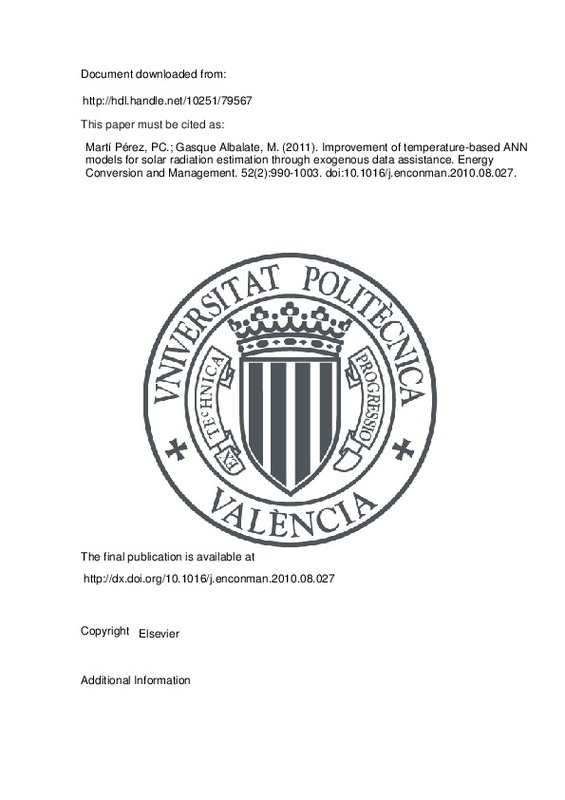|
Resumen:
|
[EN] The development of new and more precise temperature-based models for solar radiation estimation is decisive, given the immediacy and simplicity associated to their input measurements and the ubiquitous problems derived ...[+]
[EN] The development of new and more precise temperature-based models for solar radiation estimation is decisive, given the immediacy and simplicity associated to their input measurements and the ubiquitous problems derived from equipment failures, maintenance and calibration, and physical and biological constraints. Further, the performance quality of empirical equations is to be questioned in a large variety of climatic contexts. As an alternative to traditional techniques, artificial neural networks (ANNs) are highly appropriate for the modelling of non-linear processes. Nevertheless, temperature-based ANN models do not always provide accurate enough solar radiation estimations as their performance depends considerably on the specific temperature/solar radiation relationships of the studied context. This paper describes a new procedure to improve the performance accuracy of temperature-based ANN models for estimation of total solar radiation on a horizontal surface (Rs) taking advantage of ancillary data records from secondary similar stations, which work as exogenous inputs. The influence on the model performance of the number of considered ancillary stations and the corresponding number of training patterns is also analyzed. Finally, these models are compared with those relying exclusively on local temperature recordings. The proposed models provide performances with lower associated errors than those which do not consider exogenous inputs. The ancillary supply is translated into a decrease around 0.1 of RMSE in the local performance. The consideration of non-measured inputs in the simple local temperature-based models, namely extraterrestrial radiation or day of the year, entails a performance accuracy improvement around 0.1 of RMSE. © 2010 Elsevier Ltd. All rights reserved.
[-]
|







![[Cerrado]](/themes/UPV/images/candado.png)


